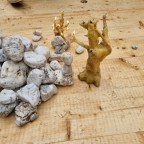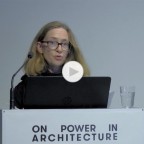Curating Architecture
| Elke Krasny : Curating Architecture
| 02/07/2013 – 13:00 – 14:00
Exhibitions of architecture are at once discursive and aesthetic operations. As an aesthetic format, exhibitions are temporary and short-term. As a discursive exploration, exhibitions shape the making of architectural history, and equally important, contribute to the general understanding and the theorization of the field in its current discussions. Where then do we find architecture exhibited? A categorization reveals the large number of venues and their inherently different logics. We find architecture exhibited, or on display, in the long history of World Fairs and the comparatively short history, with specific regard to architecture, of Biennales. Architecture exhibitions are on show in specialized architectural museums, but also in city museums, museums of technology, and increasingly in museums of contemporary art. Architecture is exhibited to the public as part of large design competitions and on the walls of architecture schools. But is it actually architecture that is exhibited in these formats and venues? Or is it a challenge for both architects and curators to develop forms which architecture can take on in its exhibited state?
In this lecture, Elke will draw both on historic and contemporary references of exhibited architecture raising the question of how this process of curated communication is situated in-between architecture and the public. In the examples given Elke will show examples of her own work, specifically the research for “The Force is in the Mind. The Making of Architecture” (Architecture Centre Vienna 2008) and “Penser Tout Haut. Faire l’Architecture” (Centre de Design, UQAM, Montréal). She will reflect on her own practice as a curator of architecture and urbanism to give an opportunity to discuss, what Elke would call, the conversational turn in curating and ways in which knowledge is produced actively in dialogue with others. Exhibitions are sites of exchange that require curators to (re)think and (re)shape the processes of knowledge production in dialogue with the architecture, and most importantly the architects.




